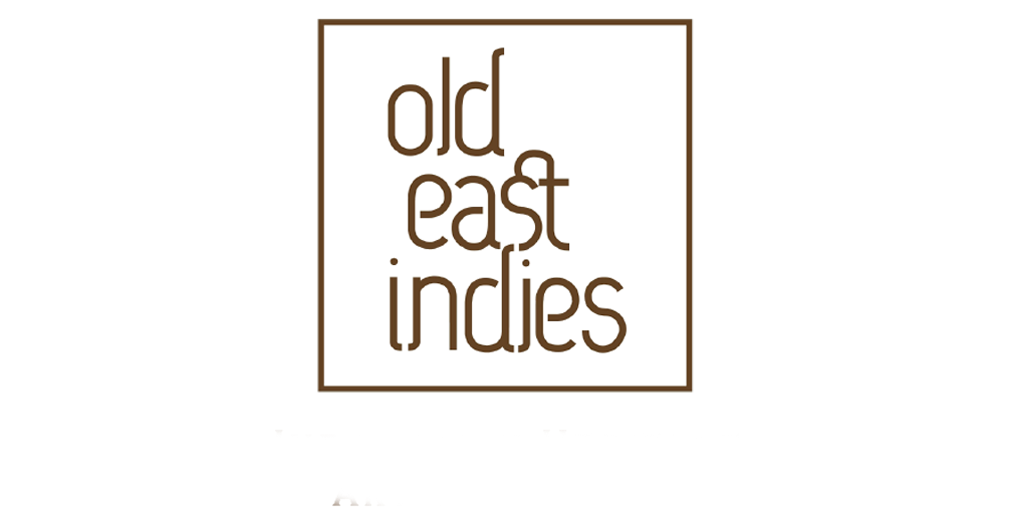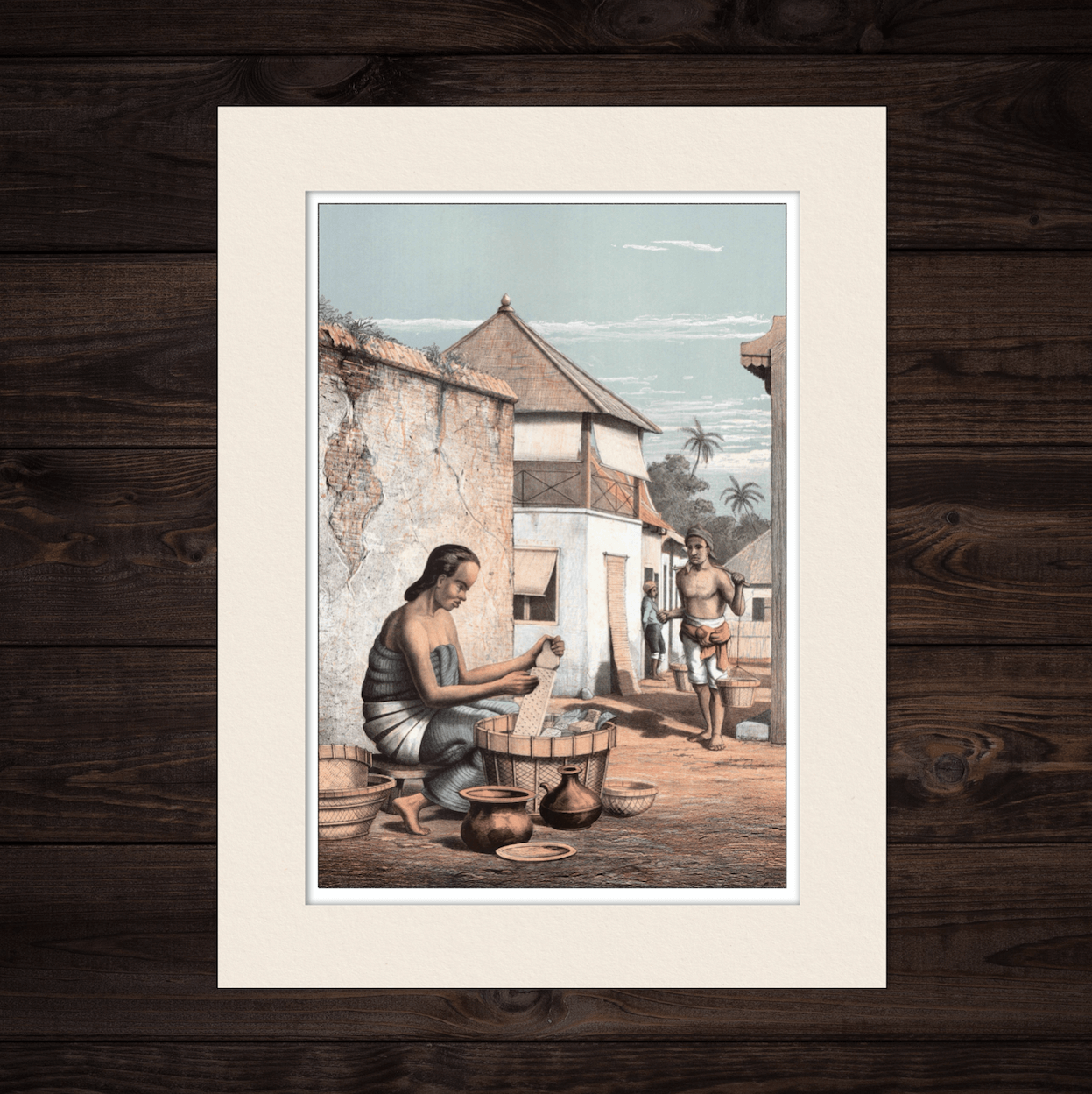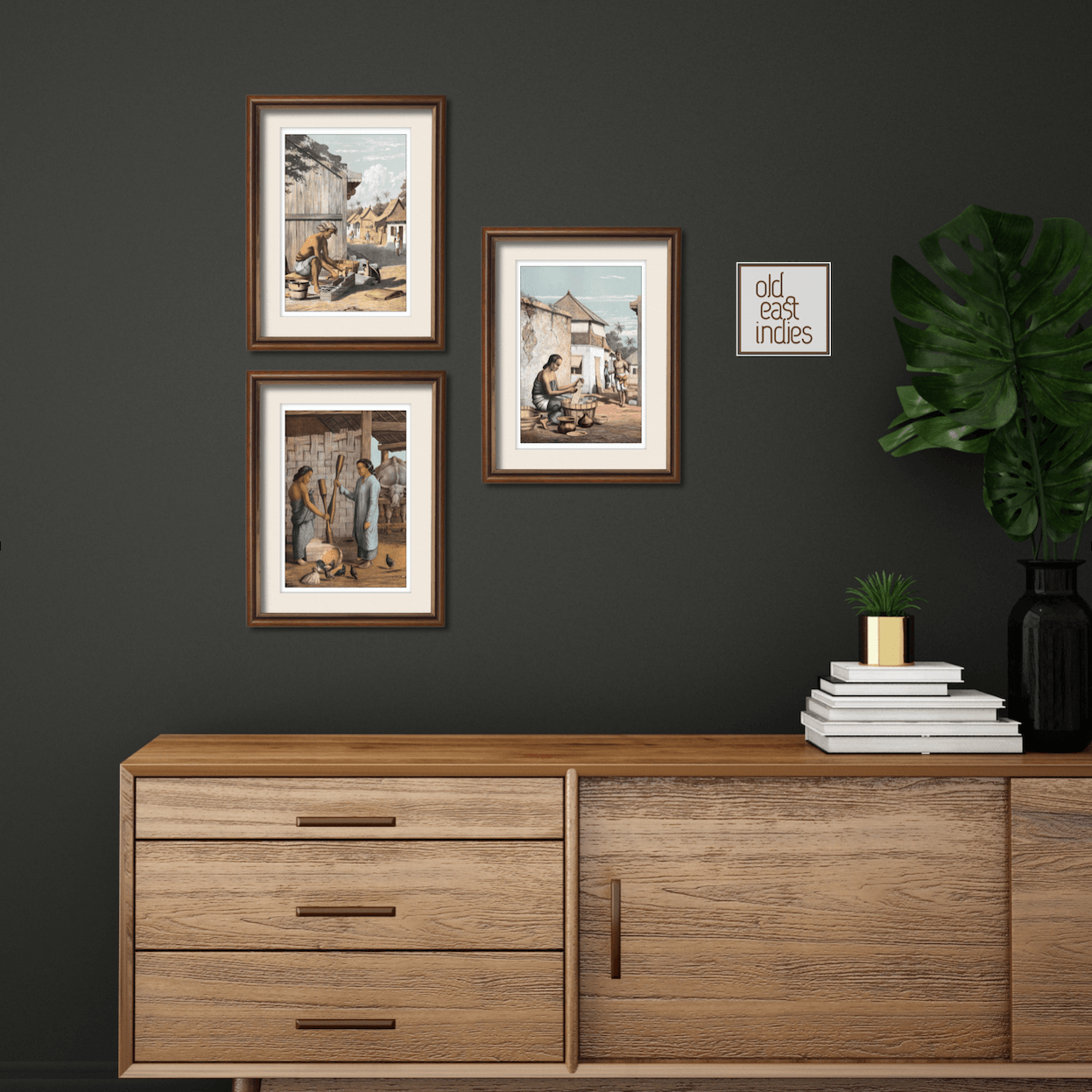Rice Cake Making ~ Year 1853
Ketupat (in Indonesian), or kupat (in Javanese and Sundanese), or tipat (in Balinese) is a Indonesian dish made of rice that has been wrapped in a woven palm leaf pouch and boiled. As the rice cooks, the grains expand to fill the pouch and the rice becomes compressed. Ketupat has also been used as "sajen" (an offering for dead ancestors) for centuries. People hang a bunch of ketupat (usually "banten" style) at the door to treat the spirit of the ancestors they believe would come back to visit.
Originally published in the year 1853 as a series of hand-finished antique lithograph prints by Auguste van Pers, made after drawings by the French artist, Ernest Hardouin. Auguste van Pers arrived in Indonesia early in 1837 and was employed as an engraver and draughtsman in the General Secretariat at Buitenzorg, known today as Bogor. Ernest Hardouin arrived in Indonesia in 1842 as a decor designer with a French theatrical troupe. In Batavia (modern day Jakarta) Hardouin made numerous sketches and drawings of the city and its inhabitants.
The series was announced as being in preparation in 1844, when some proof plates were printed but the work did not proceed. It was in the year 1853 that the Dutch printing publisher W.C. Mieling picked up the project again and the series came out in sets of 4 lithographs at a time.As originally projected, the complete work would contain 80 plates, a figure that was never reached, and 56 prints are known to exist. Hardouin did not live to see the work published - he died in poverty in Batavia in 1853 or 1854.
Up until the 19th century, just before the invention of photography, the only way to show what people, landscapes and objects looked like was by painting, sketching or printing them. In the Netherlands many prints were published of their far east colonies, or nowadays, Indonesia.
Size 37 by 28 cm.
Quality Recycled Art Paper
Mounted with Thick Art Cardboard
Description on the Back
Transparent Protection Wrapper
Ready for Framing
Our mounted art prints are printed on recycled uncoated speckled art paper.
Ketupat (in Indonesian), or kupat (in Javanese and Sundanese), or tipat (in Balinese) is a Indonesian dish made of rice that has been wrapped in a woven palm leaf pouch and boiled. As the rice cooks, the grains expand to fill the pouch and the rice becomes compressed. Ketupat has also been used as "sajen" (an offering for dead ancestors) for centuries. People hang a bunch of ketupat (usually "banten" style) at the door to treat the spirit of the ancestors they believe would come back to visit.
Originally published in the year 1853 as a series of hand-finished antique lithograph prints by Auguste van Pers, made after drawings by the French artist, Ernest Hardouin. Auguste van Pers arrived in Indonesia early in 1837 and was employed as an engraver and draughtsman in the General Secretariat at Buitenzorg, known today as Bogor. Ernest Hardouin arrived in Indonesia in 1842 as a decor designer with a French theatrical troupe. In Batavia (modern day Jakarta) Hardouin made numerous sketches and drawings of the city and its inhabitants.
The series was announced as being in preparation in 1844, when some proof plates were printed but the work did not proceed. It was in the year 1853 that the Dutch printing publisher W.C. Mieling picked up the project again and the series came out in sets of 4 lithographs at a time.As originally projected, the complete work would contain 80 plates, a figure that was never reached, and 56 prints are known to exist. Hardouin did not live to see the work published - he died in poverty in Batavia in 1853 or 1854.
Up until the 19th century, just before the invention of photography, the only way to show what people, landscapes and objects looked like was by painting, sketching or printing them. In the Netherlands many prints were published of their far east colonies, or nowadays, Indonesia.
Size 37 by 28 cm.
Quality Recycled Art Paper
Mounted with Thick Art Cardboard
Description on the Back
Transparent Protection Wrapper
Ready for Framing
Our mounted art prints are printed on recycled uncoated speckled art paper.
Ketupat (in Indonesian), or kupat (in Javanese and Sundanese), or tipat (in Balinese) is a Indonesian dish made of rice that has been wrapped in a woven palm leaf pouch and boiled. As the rice cooks, the grains expand to fill the pouch and the rice becomes compressed. Ketupat has also been used as "sajen" (an offering for dead ancestors) for centuries. People hang a bunch of ketupat (usually "banten" style) at the door to treat the spirit of the ancestors they believe would come back to visit.
Originally published in the year 1853 as a series of hand-finished antique lithograph prints by Auguste van Pers, made after drawings by the French artist, Ernest Hardouin. Auguste van Pers arrived in Indonesia early in 1837 and was employed as an engraver and draughtsman in the General Secretariat at Buitenzorg, known today as Bogor. Ernest Hardouin arrived in Indonesia in 1842 as a decor designer with a French theatrical troupe. In Batavia (modern day Jakarta) Hardouin made numerous sketches and drawings of the city and its inhabitants.
The series was announced as being in preparation in 1844, when some proof plates were printed but the work did not proceed. It was in the year 1853 that the Dutch printing publisher W.C. Mieling picked up the project again and the series came out in sets of 4 lithographs at a time.As originally projected, the complete work would contain 80 plates, a figure that was never reached, and 56 prints are known to exist. Hardouin did not live to see the work published - he died in poverty in Batavia in 1853 or 1854.
Up until the 19th century, just before the invention of photography, the only way to show what people, landscapes and objects looked like was by painting, sketching or printing them. In the Netherlands many prints were published of their far east colonies, or nowadays, Indonesia.
Size 37 by 28 cm.
Quality Recycled Art Paper
Mounted with Thick Art Cardboard
Description on the Back
Transparent Protection Wrapper
Ready for Framing
Our mounted art prints are printed on recycled uncoated speckled art paper.




